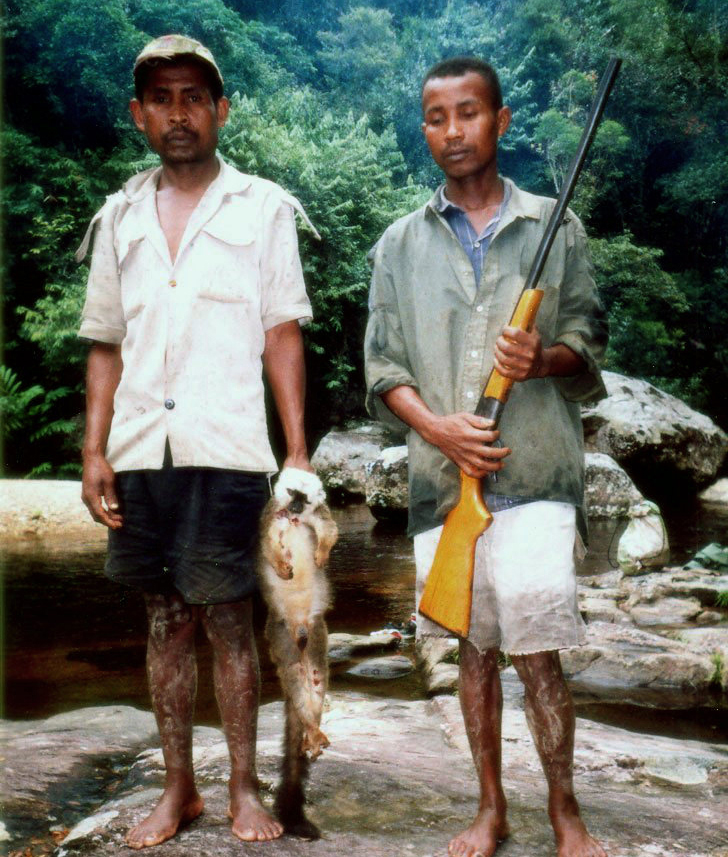
HIS 110 (CRN= 63792)
One World One Health: Humans, Animals, Environment
Professor D.K. Davis, DVM, PhD
Spring 2016: Fridays, 10-1; 108
Hoagland

"Bush Meat." This photo
illustrates the intimate interactions between humans, animals
(this lemur was poached for food)
and the environment common in many parts of the world. Such relations often
help to spread emerging diseases
such as Ebola and HIV. Source:
Wikimedia
Commons.
Course
Description:
This course presents the exciting
development of the "One World, One Health" approach and will
introduce students to the complex history and present of
"One World One Health" initiatives widely being implemented
around the world over the last decade. "One World One
Health" aims to bring together specialists from human and
veterinary medicine and environmental science to create a more
comprehensive and holistic approach to public health and
international development.
The vast majority (70% or more) of new and emerging
diseases are zoonoses (diseases spread from animals to
humans). Therefore,
comprehensive understanding and policy development require an
integrated knowledge of human medicine, veterinary medicine,
and the environment. In
response to this great need, the "healing arts" and
environmental sciences are having to reintegrate themselves in
ways not really seen since before the nineteenth century when
knowledge became fractured into distinct and ever-specializing
"disciplines." We
will study the history of the healing arts (human and
veterinary medicine) and environmental knowledge, how these
were slowly separated into separate disciplines that rarely
communicated with each other, and how the goals of "One World
One Health" are being realized today with the current focus on
"interdisciplinarity." Both
historical perspectives and contemporary case studies will be
provided. Students
from ANY major are welcome in this interdisciplinary class!
Fulfills
the GE Social Science and Arts & Humanities requirement
as well as the
Diversity (WC) and Writing requirement.
This
description subject to change